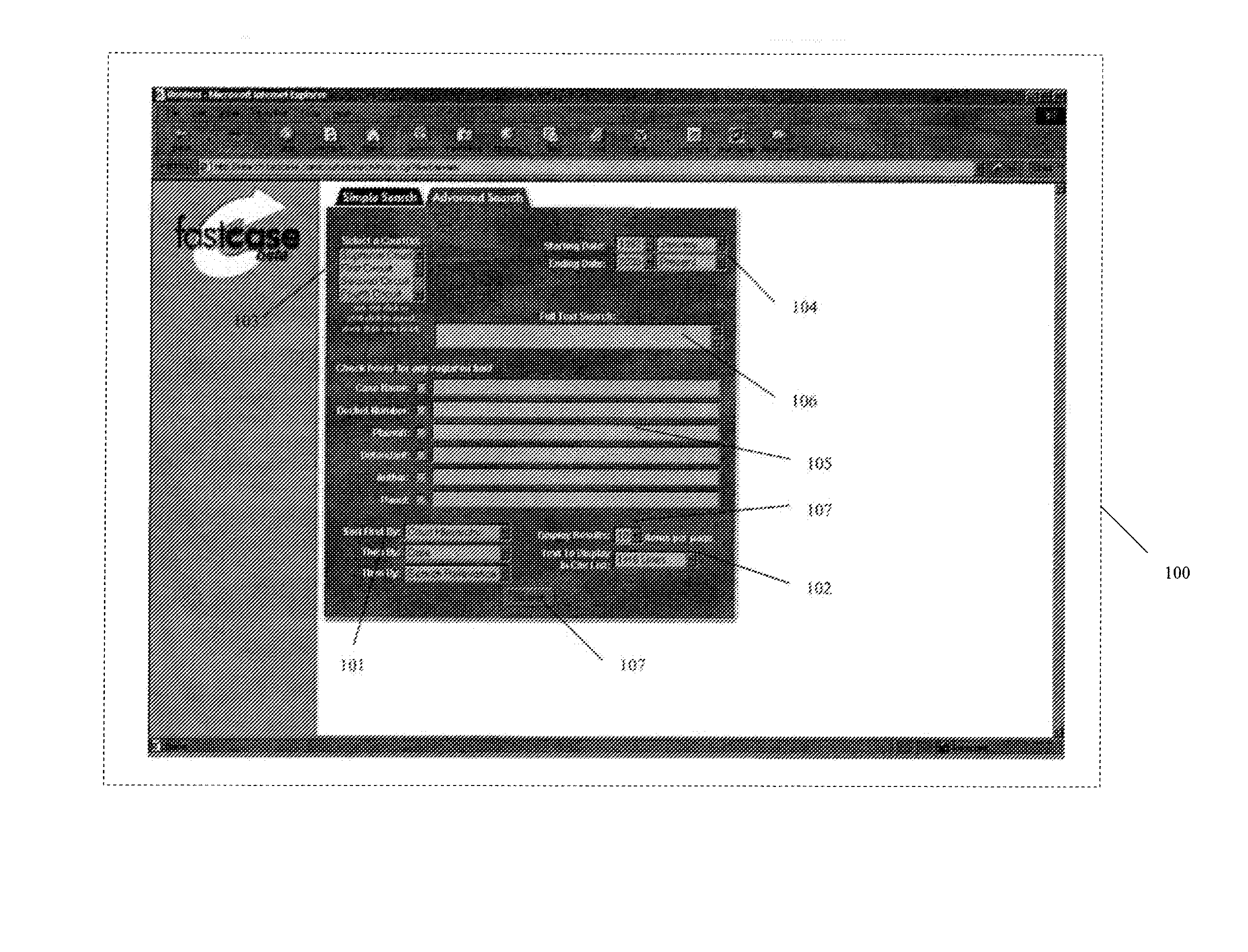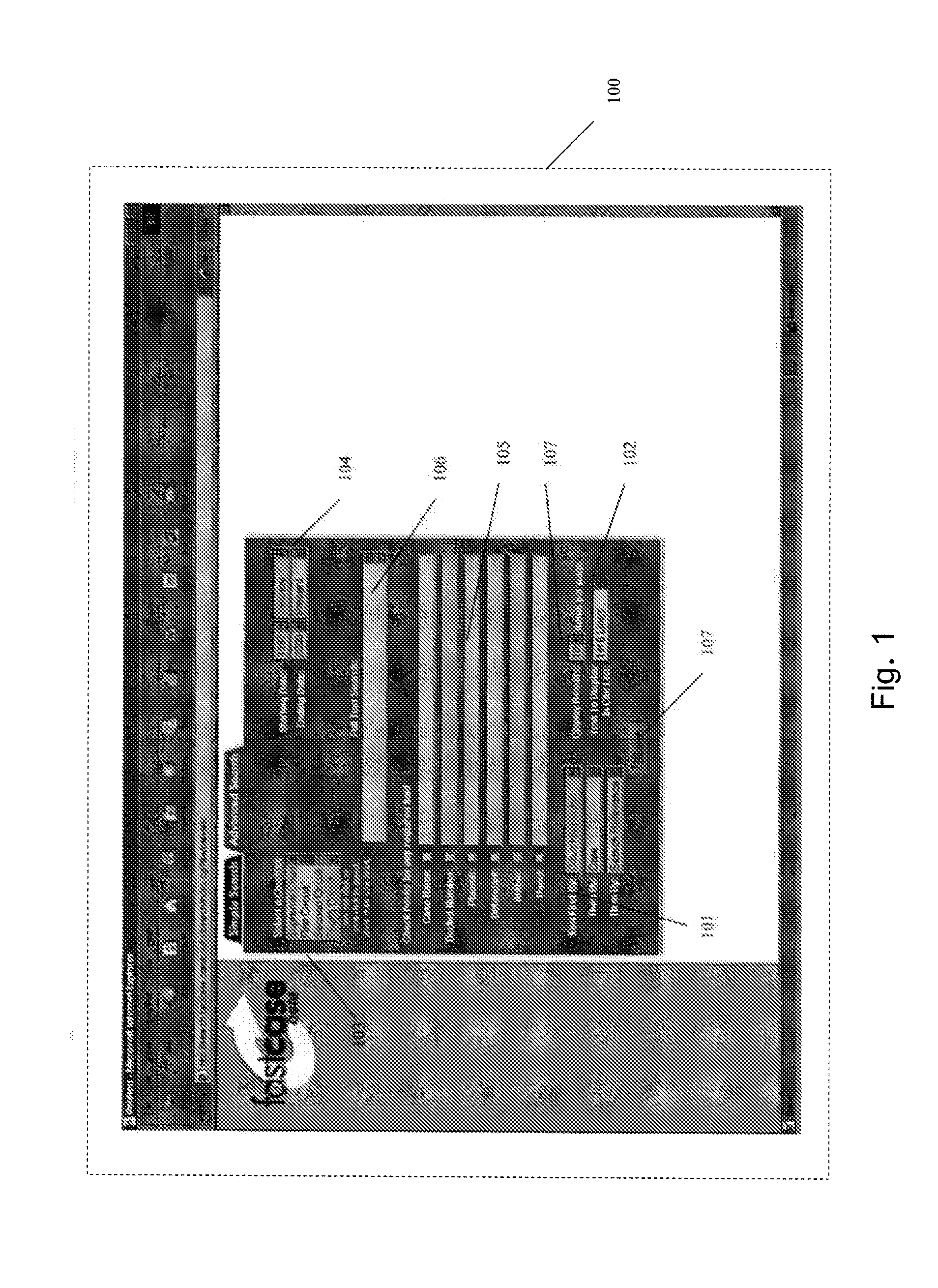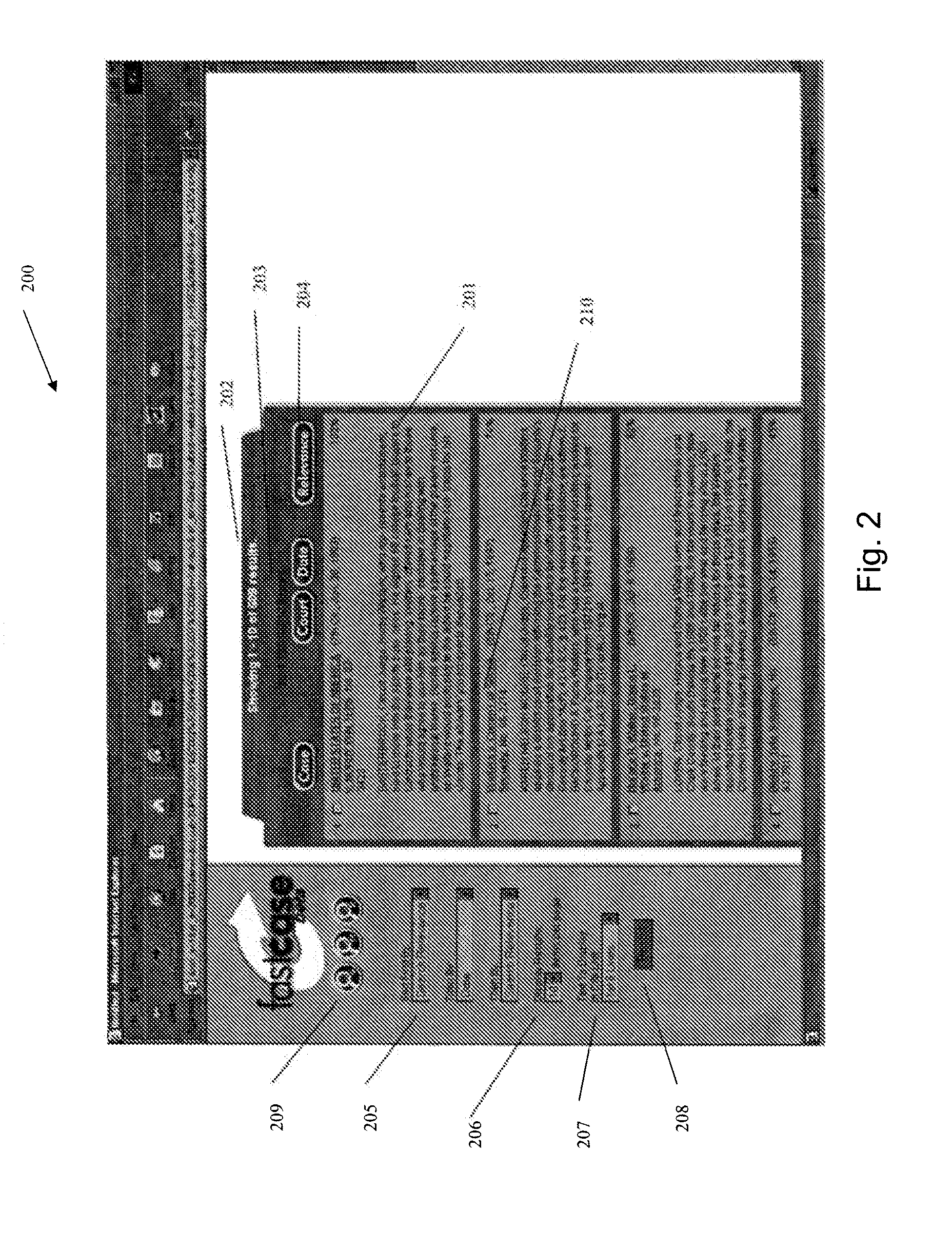Apparatus and Method for Displaying Records Responsive to a Database Query
a database and display method technology, applied in the field of computerized information search, display and retrieval systems and methods, can solve the problems of time-consuming and cumbersome searches, inefficient and dull, and little about the contents of those records, so as to accelerate computerized research
- Summary
- Abstract
- Description
- Claims
- Application Information
AI Technical Summary
Benefits of technology
Problems solved by technology
Method used
Image
Examples
Embodiment Construction
[0040] An apparatus and method are described for displaying records. In the preferred embodiment, such apparatus and method are combined with an apparatus and method for expediting legal research by displaying, representing, sorting, and navigating text files identified by a search engine. In the following description, for the purposes of explanation, numerous specific details such as mathematical formulae, algorithms, menus, and the like are set forth in order to provide the best mode of the present invention. It will be apparent, however, to one skilled in the art that the present invention may be practiced without these specific details, and is not limited to the specific details shown and described. In other instances, well known structures and devices are shown in block diagram form to more clearly set forth the present invention.
[0041]FIG. 1 shows a search screen or window 100, as may be displayed on a CRT, as an example of one possible user interface for the query screen on ...
PUM
 Login to View More
Login to View More Abstract
Description
Claims
Application Information
 Login to View More
Login to View More - R&D
- Intellectual Property
- Life Sciences
- Materials
- Tech Scout
- Unparalleled Data Quality
- Higher Quality Content
- 60% Fewer Hallucinations
Browse by: Latest US Patents, China's latest patents, Technical Efficacy Thesaurus, Application Domain, Technology Topic, Popular Technical Reports.
© 2025 PatSnap. All rights reserved.Legal|Privacy policy|Modern Slavery Act Transparency Statement|Sitemap|About US| Contact US: help@patsnap.com



